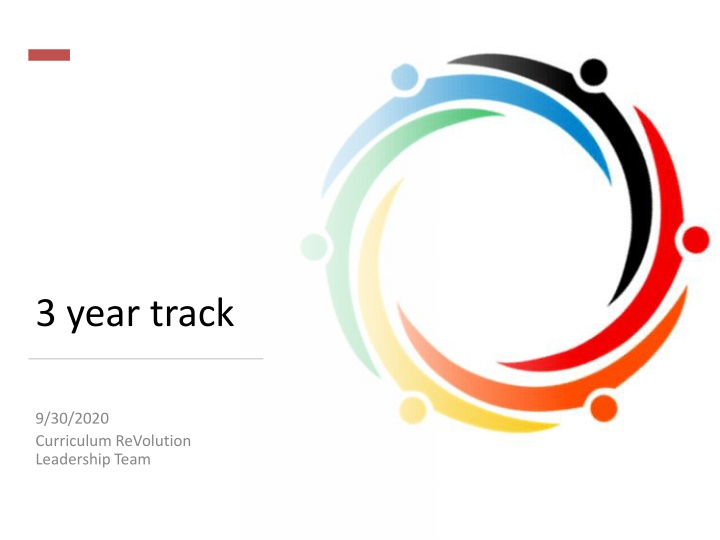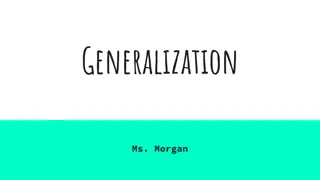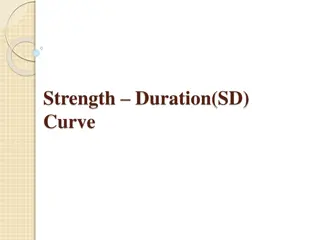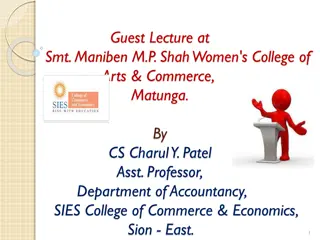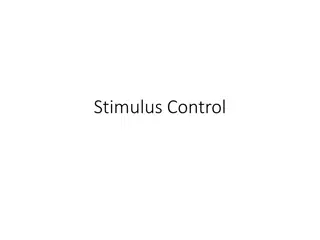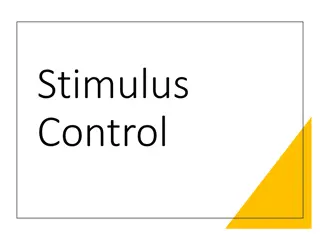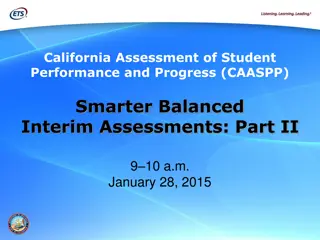Evaluation of Generalization in Training Stimulus Preference Assessments
Positive reinforcement is crucial in behavioral treatment, with stimulus preference assessments like Single Stimulus, Paired Stimulus, MSWO, Competing Stimulus, and Free Operant being commonly used. This study explores the evaluation of generalization in training these assessments. The effectiveness of reinforcement strategies is highlighted through the comparison of approaches for identifying reinforcers for individuals with disabilities.
Download Presentation

Please find below an Image/Link to download the presentation.
The content on the website is provided AS IS for your information and personal use only. It may not be sold, licensed, or shared on other websites without obtaining consent from the author.If you encounter any issues during the download, it is possible that the publisher has removed the file from their server.
You are allowed to download the files provided on this website for personal or commercial use, subject to the condition that they are used lawfully. All files are the property of their respective owners.
The content on the website is provided AS IS for your information and personal use only. It may not be sold, licensed, or shared on other websites without obtaining consent from the author.
E N D
Presentation Transcript
3 year track 9/30/2020 Curriculum ReVolution Leadership Team
Why a 3 Year MD Program? Opportunity for time to follow independent interests Financial benefit: lifetime savings of $250,0001 Provides physicians faster for predicted physician shortage Offers individualized pathways matched to student goals Allows time for dual degrees Some programs provide acceptance into residency programs 3-year MD program drives innovation in medical education 1Weiner S. AAMCNews. Friday, March 29, 2019. Available online at https://news.aamc.org/medical- education/article/med-school-3-years-future-medical-education/ . Accessed 4/10/19.
Medical Schools with 3-Year Medical Program Current 3-Year MD Programs Interested in Developing 3-Year MD Program 1. Columbia U College of Physicians and Surgeons University of North Carolina School of Medicine, Chapel Hill* 2. Cooper Medical School of Rowan University* Medical University of South Carolina* 3. Cumming SOM University of Calgary Hackensack Meridian School of Medicine at Seton Hall University* 4. DeGroote SOM (Ontario) McMaster U 5. Duke University SOM* 6. Medical College of Wisconsin* *Member of Consortium of Accelerated Medical Pathway Programs 7. Mercer U SOM* 8. NYU SOM Langone Health* 9. Ohio State SOM* 10. Pennsylvania State COM* 11. Renaissance SOM at Stony Brook U 12. Rutgers Medical School 13. Texas Tech U Health Science Center SOM* 14. U of CA Davis SOM* 15. U of Kentucky SOM* 16. U of Louisville SOM*
Variety of Models A B C D E Y1: Foundation Sciences Y2: Clerkships Y3: SubI + electives Summer sessions before M1 & M2 # wks and months splitting years Same 4Y MD program condensed & accelerated Reduced electives & shorten time off Some models assign M1 students to a clinical site for all 3 years Some models have a longitudinal clerkship
Admission Process Student Profile Expresses a strong commitment to a specific Generalist Discipline Exhibits mature behavior to complete an accelerated MD program Has a strong academic record predictive of success Application Processes 1. Secondary application with MD application 2. Must be accepted to MD program first 3. During M1 year 4. After M1 year 5. Anytime during M2 6. After PhD
Accreditation issues LCME considers this a parallel curriculum Core, comparable graduation competencies, objectives and assessments Institutionally agreed-upon educational rationale Can have additional objectives or competencies Submit earliest submission Dec 1, 2020 for consideration at Feb LCME mtg Goal implementation in 2021 for students entering in 2022
The Big Picture: 3 year track will align with generalist disciplines and our own residency programs meeting the needs of the Commonwealth and our Healthcare System Acceptance Assessment Equity Alignment
Draft timeline - Team design begins September 2020 Program director outreach and GME team invitations -- November 2020 - involved in planning; involved in first wave of implementation Step 1 adjustment - October 2020 Modeling -- Nov - Feb 2021 Present to advisory committee - by March 2021 EPC presentations begin April 2021 Final EPC focus on 3 year September 2021 (final implementation pending LCME report from 2020; may delay to 2023 implementation) - - - - -
Block-based, Single Pass, 18-month Foundational Curriculum Each student selects a Pathway (spring year 1) -- relates to Capstone and other experiences 1-week Healthcare Delivery Systems/Pathway experience spring year 2 Redesigning Core Clinical Experiences (clerkships +, integrated interstitial) Step 1 likely to move into/after 3rd/clerkship year (supports purposeful integration in CCE) 2-week service learning/health systems/population experience in fall year 3 3-year MD track
Typical Week Do we utilize any of this time for 3 year track students?
Longitudinal Assessments Competencies NBME (pre-clinical and clinical) EPAs Milestones?
Three Year Track Design Questions When do students apply? What are characteristics? How do we connect with Capstone and HSC/PHC? LPP/LIC? Clinic alignments? What additional time do they have to meet requirements? Are combined degrees feasible? What is the clinical/clerkship model? How do we promote equitable enrollment and support? How do we build advocacy and engagement experiences? Benchmarks for progression? Advisory/Committee support structure? Who else should be on this team?
3 Year MD Track draft 18 3 Year MD Track draft 18 mos mos
Existing Global health Rural health Urban health Clinical and Translational Research Baseline Clinical care Leadership Biomedical Innovation, Design, Device development Diversity LGBTQ care, race/bias HSS (QI, HCP) Humanities Community engagement Education (patient, peers, community, medical education) Simulation Advocacy (community, political) Care of vulnerable populations LatinX health/Spanish immersion Potential Pathways
Scope, sequence, methodology table(samples) Content area Level of learner (1-4) Block Specific link methodology Intro to racism and impact on health 1 Principles 1 (genetics, EBM) Race as a social construct vs biologic risk factor; impact of systemic racism and policies on health interactive lecture; think- pair-share with real-time EBM exercise Content area Topic(s) prioritization Level of learner methodology
Moving step 1 AFTER the start of Core Clinical Experiences Fosters clinical-biomedical learning Step 1 is increasingly clinical Allows preclinical space for other curriculum Would require some curriculum building for clinical-biomedical connection each rotation "I felt that there was too much emphasis in the MS1 and MS2 years about preparing for Step 1 at the expense of developing a very strong clinical knowledge for the future. The program I am at doesn't have their students take step 1 until after their first year of clerkship and I feel that their clinical knowledge is much stronger than the average UMass student." Most schools report an increase in scores Jurich D, Daniel M, Paniagua M, et al. Moving the United States Medical Licensing Examination (USMLE) Step 1 after core clerkships: An outcomes analysis. Acad Med. 2019;94:371 377.
The big picture Prior 3 year work Agenda Gaps Next steps
